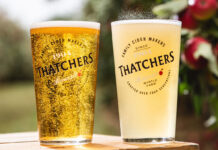A spirit with much to offer: Scotch ranges can prove compelling this Christmas

THIS month is the warm-up for the festive season in the on-trade, with early office Christmas parties acting as a precursor to the onslaught throughout December.
However, will the increased footfall over the festive period bring a greater possibility for venues to increase their whisky sales?
The answer, said spirits firms, is an unequivocal yes.
“Winter is an enormous sales opportunity for whisky,” said Chris Deacon, general manager of craft spirits distributor Maverick Drinks.
“Longer, colder nights can lead drinkers to choose richer, warming drinks that draw in the senses – and whisky fits in perfectly here.
“Winter, and more specifically Christmas, gives operators the chance to get into the festive spirit with a variety of whisky serves to suit almost every palate.”
Teddy Joseph, whisky specialist at Edrington-Beam Suntory, which counts Highland Park and Laphroaig within its portfolio, reinforced that stance.
He said: “Although the enduring appeal of on-trend low-ABV, low sugar and gin-based serves retains a strong position within the market, as the nights draw in, we see consumers searching for seasonal flavours that offer a sense of warmth amid the winter cold. With rich liquors and whisky dominating in the dark spirits category, the increasingly discerning tastes of the British drinker shows an increased desire to seek out spirits with strong provenance and differentiation from ‘the norm’.”
Longer, colder nights can lead drinkers to choose richer, warming drinks and whisky fits this perfectly.
And to take full advantage of the busy spell, operators should look to increase their premium whisky range and up-sell more expensive drams to their customers, according to Tullibardine’s master distiller, Keith Geddes.
“At Christmas, consumers are looking for something so much more than their usual at a bar,” he said.
“They want to be entertained and they want to learn, looking beyond their favourites. Up-selling is a great way to engage with consumers and talk about spirits both traditional and new.
“We would encourage bars to invest in their offering of premium whiskies by thinking bigger and more creatively.”
On the other hand, due to the cost of Christmas for customers, Anita Mamo, brand manager at Jack Daniel’s, reckons delivering wallet-friendly value should also be a key focus for licensees.
She said: “Consumers will be looking for savings during this expensive period, especially on food and drink which they tend to indulge in.
“Therefore, stocking up on customers’ favourite brands – whether that be mid-level or premium whiskies – and offering valuable promotions on seasonal serves are likely to draw attention and grow sales.”
Thanks to a concerted effort from the teams behind whisky brands, the category is now said to be more approachable, particularly to younger customers who may have previously steered clear of the spirit.
For a complex category like whisky, navigating by flavour can be much easier for consumers.
According to the recent William Grant & Sons Trending 2020 report, the category is evolving beyond its “stereotypical image to meet the growing needs of the new age consumer”.
And Sarah Clark, senior global trade marketing manager at International Beverage Holdings, the owner of single malts Old Pulteney and anCnoc, stated that with younger drinkers looking to trade up, the single malt category “is perfect for those seeking quality, character and a premium experience at the bar”.
She added: “Younger drinkers like to explore, and the whisky category has so much to offer.
“There is so much character and depth to the category, and so many quality brands and expressions to discover to try; whisky producers are also getting much better at innovation, so there is always something new and interesting coming into the market.”
Angeles Marin, brand manager at Bunnahabhain and Deanston parent firm Distell, echoed that view.
“Although younger consumers are drinking less, they are drinking better,” she said.
“This provides an opportunity to [sell] consumers more premium [whiskies], both within the blended Scotch space as well as encourage them to explore the single malt category.
“We are also living in the ‘experience economy’ where consumers, especially younger, place more emphasis on experiences and knowledge than possessions.”
When it comes to organising a malt whisky range on the back-bar, there could be merit in a shift away from the classic regional split (Highland, Lowland, Speyside, etc.) and grouping drams by flavour profile as more distilleries begin to produce a variety of styles.
A spokesman for Ian Macleod Distillers, the firm behind single malts Glengoyne, Tamdhu and Smokehead, said: “For a complex category like whisky, navigating by flavour can be much easier for new consumers.
“It’s really important that the industry continually evolves, but that doesn’t mean provenance has had its day.”
Top tips
Offer experiences around whisky that the consumer can’t get from anywhere else. Keep language easy to understand and always highlight whisky’s versatility in both long and short formats.
– Distell.
There’s opportunities around the festive season to look at food and whisky pairings; with such a range of flavour profiles within whisky, the possibilities are endless.
– Ian Macleod Distillers.
Stock a great range, with options for all different tastes and occasions; curate them well and display them beautifully.
– International Beverage Holdings.
Have something new to offer that will spark conversation and engage staff.
– Maverick Drinks.
Offering a premium serve as part of your menu will encourage knowledgeable drinkers to delve deeper into the premium end of your whisky offering.
– Edrington-Beam Suntory.
























